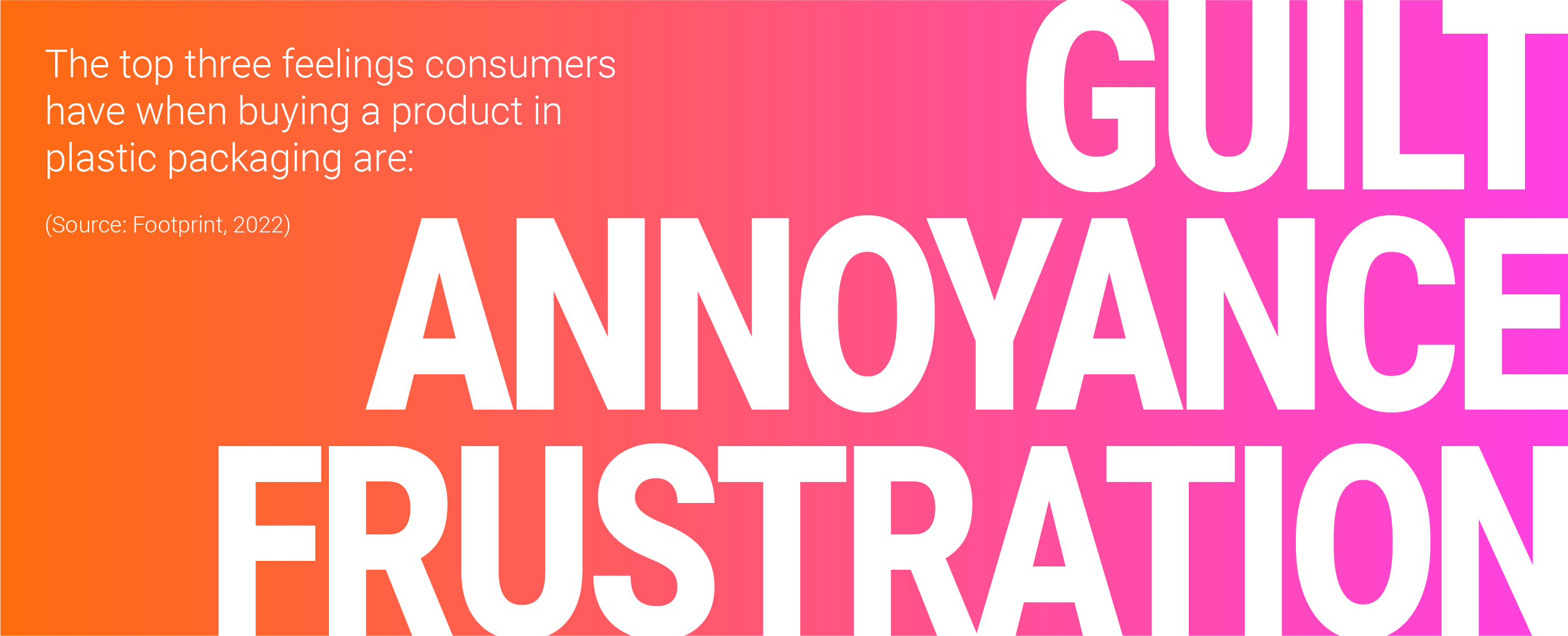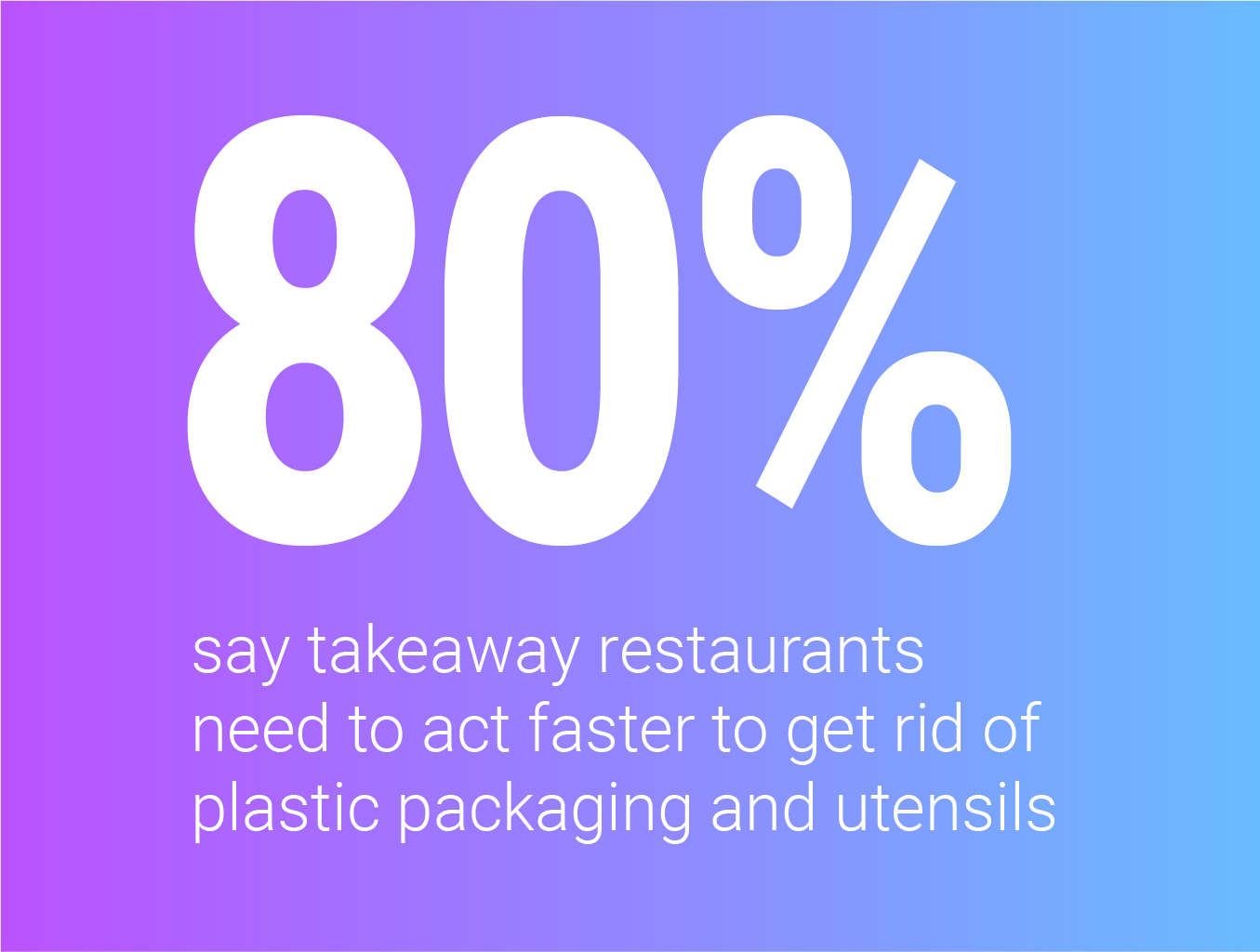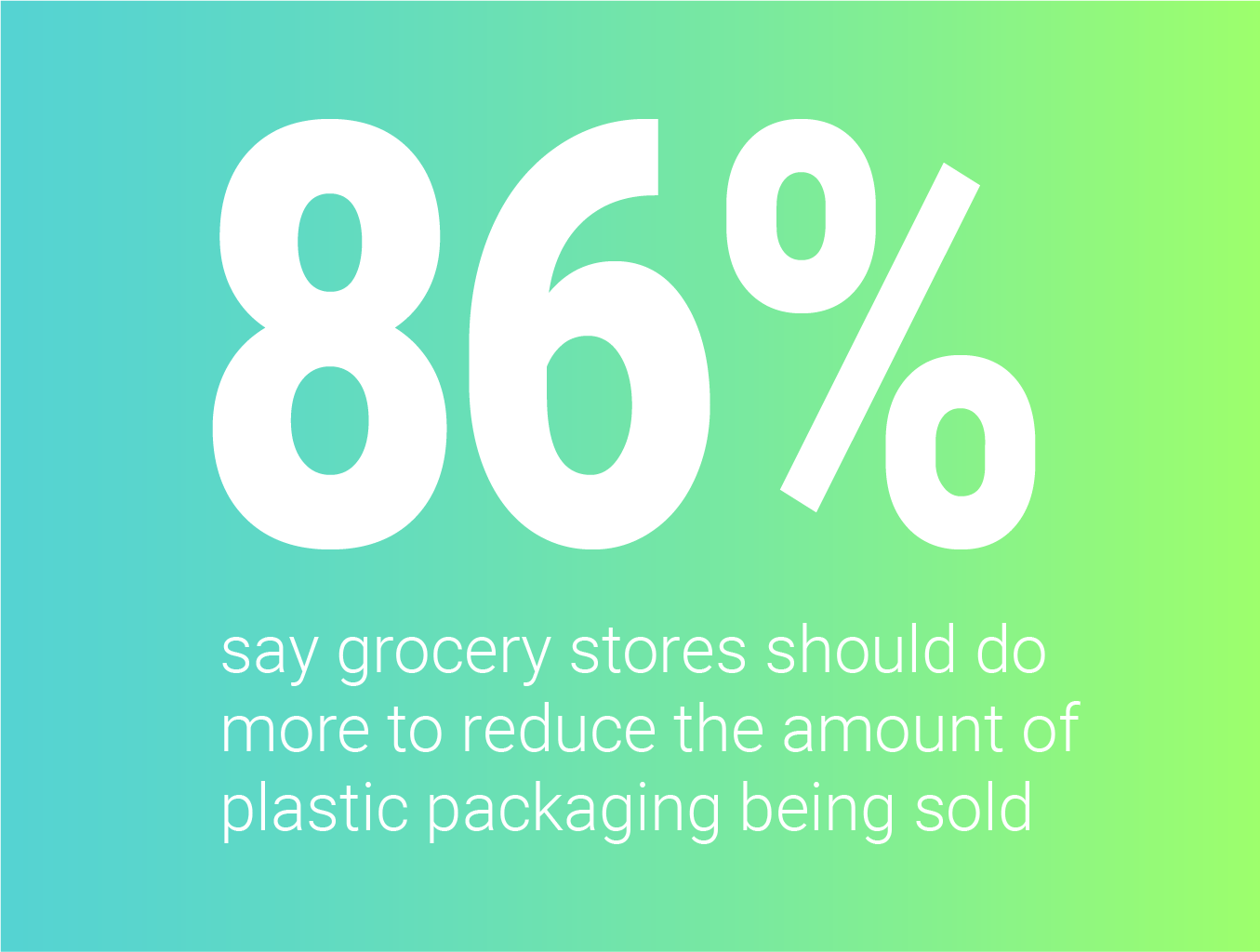Part 5: Consumers and Plastic. It’s emotional.
This is the fifth post in our series: Sustainable Packaging Transformations℠.
Plastics is an emotionally charged issue.
The news reports lately of microplastics, plastic pollution and potential health implications are increasing. Consumers are realizing they are passively exposed and ingesting nanoparticles without even knowing it and the potential long-term health implications are scary. With that – they are surrounded by plastic packaging and are recognizing this omnipresent part of daily life may be dangerous and is certainly bad for the environment. This awareness is impacting purchase behaviors as reflected in a recent poll where 91% of Americans consider the amount of plastic used in a product or packaging when making purchase decisions.

Consumer reckoning
For years recycling has been touted as to the solution to the plastic problem. The reality – only 9% of plastics are recycled each year in the US. Consumers are confused and starting to wonder why they are the answer to the plastic problem. Where is the accountability for manufacturers?
If the new ban on single-use plastic packaging in the EU and lawsuits and bans in California are any indication – a reckoning is coming – where manufacturers of products that come in plastic packaging and plastic bags – will be held financially accountable for plastic pollution. This, combined, with the change in consumer needs and purchasing patterns is a signal to marketers, packaging designers and CPG brands, that it is time to take this issue seriously and focus on removing plastic from packaging.
Eighty-five percent of people said brands should play a major role in solving sustainability because they’re the ones causing the problem. A majority of respondents (78%) also concurred that companies and brands are not currently doing enough to protect the planet.



This change in brand purchase patterns is particularly noticeable amongst younger consumers where brand loyalty is in steep decline.
Generation Z and millennials are especially concerned and identify plastics a constant source of stress and anxiety about the future of the planet.
The Upside
In our design industry – everything we do is driven by and grounded in consumer insights. What is the consumer need we are meeting? The emotional nature of consumers and plastic gives brands an amazing opportunity to address these triggers for behavioral change…purchasing habits, trial, and brand love.
For more nimble brands here’s your chance to outmaneuver your competition and seize the opportunity now to redesign plastic out of your packaging as consumers are saying it’s worth the time, energy, investment, and imagination. Frankly – they are looking to CPG companies to solve this problem or face the consequences.
It’s time to future-proof your brand.
Plastic has been perceived as a miracle material and a benign presence in our lives…until now. What this ubiquitous substance could do to our health, the environment, and the planet is now reaching mainstream consumer awareness. How we got “here” is not as important now as how we are going to “get there” – a plastic-free future.
We must imagine a better way and design it. At domo domo, plastic packaging is a design problem…we know how to solve.
Stay tuned for our next installment of Sustainable Packaging Transformations℠.
